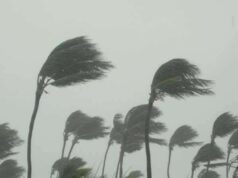
Senators Propose Solution for “Orphaned” Nuclear Waste
Nuclear waste is a major environmental concern that continues to pose challenges for governments and communities around the world. In the United States, there are more than 100 nuclear power plants that generate 2,200 metric tons of highly radioactive waste each year. Much of this waste is stored on-site, creating a safety risk for nearby communities. Furthermore, about 80,000 metric tons of “orphaned” nuclear waste – waste with no clear owner or location for disposal – is scattered across the country. In response to this issue, a group of bipartisan senators has proposed a solution for “orphaned” nuclear waste.
The Problem of Orphaned Nuclear Waste
Orphaned nuclear waste refers to waste that has been generated by activities other than nuclear power generation, such as medical and industrial processes. This waste is often stored temporarily on-site but may not have a designated storage location, making it vulnerable to accidents, theft, or misuse.
The absence of a clear plan for disposal also creates financial liabilities for facilities that have orphaned waste on their premises. The costs associated with the ongoing management of this waste can be substantial, and the lack of long-term solutions for disposal can hinder investments in new facilities and technologies.
A Solution Proposed
A bipartisan group of senators has introduced a bill that would provide a solution for orphaned nuclear waste. The proposed legislation would direct the Department of Energy (DOE) to establish a pilot program for the consolidation of orphaned nuclear waste from across the country. The pilot program would test the feasibility of establishing one or more regional sites for the storage of orphaned waste.
The bill also directs the DOE to establish a competitive grant program to support the development of technologies for the treatment and disposal of orphaned nuclear waste. This program would incentivize the development of innovative technologies and provide additional solutions for the safe and efficient disposal of nuclear waste.
Challenges and Opportunities
While the proposed legislation has received bipartisan support, there are still challenges that must be addressed. The establishment of regional storage sites for orphaned waste will require extensive planning and coordination with state and local governments. Furthermore, the development of new technologies for waste treatment and storage will require substantial investment and collaboration with private industry and academic institutions.
However, the proposed solution also presents opportunities for economic growth and job creation. The development of new technologies and the consolidation of orphaned nuclear waste could create new jobs in the energy and environmental technology sectors, as well as provide an opportunity for the U.S. to become a global leader in nuclear waste management.
Conclusion
The proposed solution for orphaned nuclear waste presents an opportunity for the U.S. to address the ongoing challenge of nuclear waste management. By consolidating and storing waste in regional sites and supporting the development of new technologies, we can reduce the risks associated with nuclear waste and create new opportunities for economic growth.
Four United States Senators—two Democrats and two Republicans—proposed a bill this week aimed at solving the country’s nuclear storage woes. If the bill becomes law, it would create a nuclear waste policy incorporating both temporary and permanent storage solutions.
After President Obama de-funded the Yucca Mountain Project, which would have provided permanent storage for the nation’s nuclear waste in one location in Nevada, federal lawmakers have struggled to reach a compromise regarding where spent nuclear fuel should be stored.
Nevadans largely stood in opposition to the Yucca Mountain facility, in part because they feared that the facility could leave the Las Vegas area vulnerable to radiation exposure if containment were to be breached. Because of concerns from nearby residents in any proposed location for long-term nuclear waste storage, finding a resting spot for tens of thousands of tons of nuclear waste has long been a political hot potato.
According to the terms of the bill introduced by Sens. Dianne Feinstein (D-CA), Lamar Alexander (R-TN), Ron Wyden (D-OR) and Lisa Murkowski (R-AK), nuclear waste would be handled by a new agency, the Nuclear Waste Administration. Feinstein said in a press release that “the inability of the federal government to collect waste stored across the country at functioning power plants, decommissioned reactors and federal facilities is costing taxpayers hundreds of millions of dollars a year.”
Today, nuclear waste is not centrally stored, or even stored according to any kind of national plan or strategy. Often, spent nuclear fuel rods, which are extremely dangerous nuclear waste, are left on-site at nuclear plants after decommissioning. This nuclear waste, called “orphan” waste because it is located in facilities with no functional reactor, is difficult to transport because much of the gear for transporting spent fuel rods is decommissioned along with the reactors.
This creates a particular problem in areas that are vulnerable to natural disasters. In addition, the decentralized storage of nuclear waste has led to some waste being stored in containers that may be vulnerable to deliberate attack, including containers visible from major highways.
The senators incorporated public feedback in their bill after receiving over 2,500 comments about a proposed nuclear waste measure. However, the bill may face an uphill battle in the House of Representatives. Legislators there are still attempting to restore funding to the Yucca Mountain Project, in spite of repeated presidential assurances that the project will not be resumed.
The next step for the bill is to be heard in front of the Energy and Natural Resources Committee. The hearing is scheduled for July.





















